-

Dec
05
Interpretive Summary: The essential oil blend Agolin Ruminant L reduces methane production in vitro and in vivo when included in the drinking water of cattle
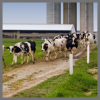
Most research conducted to reduce methane (CH4) emissions from cattle has focused on intensive feeding systems, such as dairy and feedlots, where feeding management is tightly controlled. The delivery of CH4 mitigants to ruminants grazing in extensive pasture-based systems requires attention. Two experiments were conducted to investigate the delivery of an essential oil blend called Agolin Ruminant L (Agolin) to beef cattle via drinking water to reduce CH4 emissions.
Read more
-

Dec
05
Interpretive Summary: Adding gastrointestinal parasite resistance to the breeding objective in hair sheep: initial steps
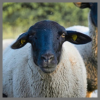
Gastrointestinal parasite resistance is a heritable trait important to breeders of hair sheep. However, the U.S. Maternal Hair Index, provided by the National Sheep Improvement Program, omits parasite resistance. Selection indexes were designed in this study to continue improving total weight of lamb weaned per ewe lambing (TW), the current goal, and reduce postweaning fecal egg count (PFEC), an indicator of parasite resistance.
Read more
-

Dec
05
Interpretive Summary: Characterizing local pig breeds as reservoirs for the domestic pig genetic variability worldwide via contributions to gene diversity and allelic richness

The assessment of contributions to diversity is informative on how allelic frequencies of a metapopulation are partitioned among subpopulations and is further useful to identify unique subpopulations gathering rare alleles. Up to 2,260 pig genotypes were used to assess contributions to gene diversity and allelic richness in a total of 98 local domestic pig subpopulations and 6 Cosmopolitan pig populations worldwide.
Read more
-

Dec
05
Interpretive Summary: The effect of repeated lipopolysaccharide endotoxin challenge on immune response of breeding ewes and subsequent lamb performance

During disease states, bacterial endotoxins act locally and systemically, negatively impacting reproductive capacity and economic productivity. The present study investigated the impacts of repeated low-dose endotoxin exposure during follicular development on the immune response and subsequent reproductive and lamb growth variables.
Read more
-

Dec
05
Interpretive Summary: The impact of exogenous vasoactive intestinal polypeptide on inflammatory responses and mRNA expression of tight junction genes in lambs fed a high-grain diet

This research investigates the potential of administering vasoactive intestinal polypeptide (VIP) to ruminants fed grain-based diets, to mitigate gut inflammation and thus enhance growth performance. Lambs were adapted to a corn-based diet with no added forage and randomly assigned to control (no VIP) or VIP treatment groups.
Read more
-

Dec
05
Interpretive Summary: Influence of sire plane of nutrition and targeted body weight gain on ewe lamb growth, glucose metabolism, and ovarian reserve

Recent literature suggests that exposure of the sire to excess or inadequate nutrition before breeding could contribute to altered growth, metabolism, and reproduction of their offspring. Exposure of the offspring to postnatal environmental stressors may further exacerbate the effects of sire nutrition on growth and metabolism.
Read more
-

Nov
21
Washington Roundup - November 2024
.png?sfvrsn=cb2854d1_1)
Novembers edition of Washington Roundup includes three overviews: Congress Returns for Lame Duck Session, Registration Open for USDA’s 101st Agricultural Outlook Forum, and NIFA Publishes Climate Science Report.
Read more
-

Nov
21
A Synopsis of the 2024 International Summit on Societal Role of Meat and Livestock
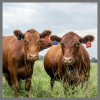
Members of the ASAS Public Policy Committee attended the Societal Role of Meat and Livestock - Denver Summit 2024. The following brief highlights the purpose, activities, significance, and proposed outcomes of the summit.
Read more
-

Nov
21
CAST Report on the Potential for U.S. Agriculture to be Greenhouse Gas Negative
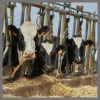
The ASAS Public Policy Committee continually looks to share information which increases awareness of strategies and solutions for a more sustainable animal agricultural future. A recently released report “Potential for U.S. Agriculture to Be Greenhouse Gas Negative", assembled by the Council for Agricultural Science and Technology (CAST) in partnership with U.S. Farmers & Ranchers in Action (USFRA), examines strategies for reducing greenhouse gas (GHG) emissions within U.S. agriculture, particularly focusing on animal production systems. The report outlines how combining reduced GHG emissions from some agricultural activities with increased carbon sequestration in others could achieve GHG-negative agriculture. It also describes the research needed to help accomplish it.
Read more
-

Nov
20
The Giving Herd - ASAS Foundation Newsletter - November 2024

The November Edition of The Giving Herd, an ASAS Foundation Newsletter.
Read more
-

Nov
14
Bob and Grace Wettemann - Their Story and ASAS Journey

Read more
-

Nov
14
Interpretive Summary: Trace mineral sources influence in vitro fermentation characteristics and trace mineral solubility
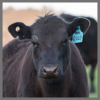
Copper, Mn, and Zn are essential trace minerals (TM) supplemented in cattle to prevent TM deficiencies. Supplemental TM sources can differ in solubility within the digestive tract of cattle, which can impact rumen fermentation and availability for absorption from the small intestine.
Read more
-

Nov
14
Interpretive Summary: Coated oregano essential oil and cinnamaldehyde compounds supplementation improves growth performance, enhances immune responses, and inhibits cecal Escherichia coli proliferation of broilers

The use of antibiotic growth promoters (AGPs) has been restricted or even prohibited around the world, which brings serious challenges to the health development of the poultry industry. Some plant essential oils and their constituent bioactive compounds have received increasing attention in antibiotic-free diets thanks to their antibacterial and anti-inflammatory properties, and lack of environmental residue.
Read more
-

Nov
14
Interpretive Summary: Dietary glycerides of valerate ameliorate diarrhea and impact intestinal physiology and serum biomarkers in weaned piglets infected with enterotoxigenic Escherichia coli F18
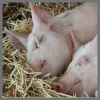
Postweaning diarrhea is a major challenge on commercial pig farms. The current study aimed to determine the efficacy of dietary valerate glycerides supplemented to weaned piglets under enterotoxigenic E. coli (ETEC) F18 infection conditions.
Read more
-

Nov
14
Interpretive Summary: Transforming estimated breeding values from observed to probability scale: how to make categorical data analyses more efficient

Calving ease is recorded as a binary trait, easy or difficult calving. Predicting breeding values as the probability of expressing easy calving requires using threshold models, a nonlinear statistical methodology with intensive computing requirements emphasized nowadays with big datasets.
Read more
-

Nov
14
Interpretive Summary: Exploring the impact of fatty acid composition on carcass and meat quality in Bos taurus indicus influenced cattle
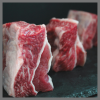
The fat composition and mineral content of beef influences both its taste and nutritional value. This study seeks to understand the relationship between meat quality and the nutritional value of beef from Brangus cattle. Animals varied greatly in their levels of essential omega-6 and monounsaturated fat.
Read more
-

Nov
14
Interpretive Summary: Effects of chicken slurry inclusion on apparent total tract macronutrient digestibility, palatability, and fecal characteristics, microbiota, and metabolites of healthy adult dogs

Premium pet foods often include chicken slurry, which is thought to be superior to chicken meal but is not well-tested. This study aimed to determine how chicken slurry inclusion level affected the apparent total tract digestibility (ATTD) and palatability of extruded dog foods, and gastrointestinal health indices of dogs.
Read more
-

Nov
14
Interpretive Summary: Is heat stress a growing problem for dairy cattle husbandry in the temperate regions? A case study of Baden-Württemberg in Germany

Heat stress and its effects on milk production are commonly related to the effects of climate change. In the temperate regions, cold winters and mild summers have historically provided some buffering effect and maintained milk production. However, a measurable effect of heat stress on milk production was found, with its severity and period dependent on microclimates and the rate of increase dependent on climate change.
Read more
-

Nov
07
Interpretive Summary: Dietary fiber and weaning age affect stress and immune markers in saliva of sows and their offspring
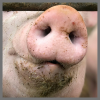
This study explored how diet, specifically dietary fiber, and the timing of weaning affect the wellbeing of pigs. The sows and their offspring were fed two types of fiber: low-fermentable hay and high-fermentable sugar beet pulp, in either fine or coarse form. Conventional weaning with late weaning of piglets was also compared.
Read more
-

Nov
07
Interpretive Summary: A study of solely used phytase or in combination with multi-carbohydrase on growth performance along with tibia mineralization, and carcass traits in broilers fed nutrient-deficient diets
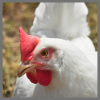
Poultry encounter challenges in synthesizing endogenous enzymes to completely degrade antinutritional factors, including phytic acid (PA) and nonstarch polysaccharides (NSP). These exogenous enzymes are present in plant-based feed ingredients, which encapsulate nutrients and adversely affect their digestion in the gastrointestinal tract (GIT).
Read more
 DecInterpretive Summary: The essential oil blend Agolin Ruminant L reduces methane production in vitro and in vivo when included in the drinking water of cattle
DecInterpretive Summary: The essential oil blend Agolin Ruminant L reduces methane production in vitro and in vivo when included in the drinking water of cattle Most research conducted to reduce methane (CH4) emissions from cattle has focused on intensive feeding systems, such as dairy and feedlots, where feeding management is tightly controlled. The delivery of CH4 mitigants to ruminants grazing in extensive pasture-based systems requires attention. Two experiments were conducted to investigate the delivery of an essential oil blend called Agolin Ruminant L (Agolin) to beef cattle via drinking water to reduce CH4 emissions.
Most research conducted to reduce methane (CH4) emissions from cattle has focused on intensive feeding systems, such as dairy and feedlots, where feeding management is tightly controlled. The delivery of CH4 mitigants to ruminants grazing in extensive pasture-based systems requires attention. Two experiments were conducted to investigate the delivery of an essential oil blend called Agolin Ruminant L (Agolin) to beef cattle via drinking water to reduce CH4 emissions. DecInterpretive Summary: Adding gastrointestinal parasite resistance to the breeding objective in hair sheep: initial steps
DecInterpretive Summary: Adding gastrointestinal parasite resistance to the breeding objective in hair sheep: initial steps Gastrointestinal parasite resistance is a heritable trait important to breeders of hair sheep. However, the U.S. Maternal Hair Index, provided by the National Sheep Improvement Program, omits parasite resistance. Selection indexes were designed in this study to continue improving total weight of lamb weaned per ewe lambing (TW), the current goal, and reduce postweaning fecal egg count (PFEC), an indicator of parasite resistance.
Gastrointestinal parasite resistance is a heritable trait important to breeders of hair sheep. However, the U.S. Maternal Hair Index, provided by the National Sheep Improvement Program, omits parasite resistance. Selection indexes were designed in this study to continue improving total weight of lamb weaned per ewe lambing (TW), the current goal, and reduce postweaning fecal egg count (PFEC), an indicator of parasite resistance. DecInterpretive Summary: Characterizing local pig breeds as reservoirs for the domestic pig genetic variability worldwide via contributions to gene diversity and allelic richness
DecInterpretive Summary: Characterizing local pig breeds as reservoirs for the domestic pig genetic variability worldwide via contributions to gene diversity and allelic richness The assessment of contributions to diversity is informative on how allelic frequencies of a metapopulation are partitioned among subpopulations and is further useful to identify unique subpopulations gathering rare alleles. Up to 2,260 pig genotypes were used to assess contributions to gene diversity and allelic richness in a total of 98 local domestic pig subpopulations and 6 Cosmopolitan pig populations worldwide.
The assessment of contributions to diversity is informative on how allelic frequencies of a metapopulation are partitioned among subpopulations and is further useful to identify unique subpopulations gathering rare alleles. Up to 2,260 pig genotypes were used to assess contributions to gene diversity and allelic richness in a total of 98 local domestic pig subpopulations and 6 Cosmopolitan pig populations worldwide. DecInterpretive Summary: The effect of repeated lipopolysaccharide endotoxin challenge on immune response of breeding ewes and subsequent lamb performance
DecInterpretive Summary: The effect of repeated lipopolysaccharide endotoxin challenge on immune response of breeding ewes and subsequent lamb performance During disease states, bacterial endotoxins act locally and systemically, negatively impacting reproductive capacity and economic productivity. The present study investigated the impacts of repeated low-dose endotoxin exposure during follicular development on the immune response and subsequent reproductive and lamb growth variables.
During disease states, bacterial endotoxins act locally and systemically, negatively impacting reproductive capacity and economic productivity. The present study investigated the impacts of repeated low-dose endotoxin exposure during follicular development on the immune response and subsequent reproductive and lamb growth variables. DecInterpretive Summary: The impact of exogenous vasoactive intestinal polypeptide on inflammatory responses and mRNA expression of tight junction genes in lambs fed a high-grain diet
DecInterpretive Summary: The impact of exogenous vasoactive intestinal polypeptide on inflammatory responses and mRNA expression of tight junction genes in lambs fed a high-grain diet This research investigates the potential of administering vasoactive intestinal polypeptide (VIP) to ruminants fed grain-based diets, to mitigate gut inflammation and thus enhance growth performance. Lambs were adapted to a corn-based diet with no added forage and randomly assigned to control (no VIP) or VIP treatment groups.
This research investigates the potential of administering vasoactive intestinal polypeptide (VIP) to ruminants fed grain-based diets, to mitigate gut inflammation and thus enhance growth performance. Lambs were adapted to a corn-based diet with no added forage and randomly assigned to control (no VIP) or VIP treatment groups. DecInterpretive Summary: Influence of sire plane of nutrition and targeted body weight gain on ewe lamb growth, glucose metabolism, and ovarian reserve
DecInterpretive Summary: Influence of sire plane of nutrition and targeted body weight gain on ewe lamb growth, glucose metabolism, and ovarian reserve Recent literature suggests that exposure of the sire to excess or inadequate nutrition before breeding could contribute to altered growth, metabolism, and reproduction of their offspring. Exposure of the offspring to postnatal environmental stressors may further exacerbate the effects of sire nutrition on growth and metabolism.
Recent literature suggests that exposure of the sire to excess or inadequate nutrition before breeding could contribute to altered growth, metabolism, and reproduction of their offspring. Exposure of the offspring to postnatal environmental stressors may further exacerbate the effects of sire nutrition on growth and metabolism. NovWashington Roundup - November 2024
NovWashington Roundup - November 2024.png?sfvrsn=cb2854d1_1) Novembers edition of Washington Roundup includes three overviews: Congress Returns for Lame Duck Session, Registration Open for USDA’s 101st Agricultural Outlook Forum, and NIFA Publishes Climate Science Report.
Novembers edition of Washington Roundup includes three overviews: Congress Returns for Lame Duck Session, Registration Open for USDA’s 101st Agricultural Outlook Forum, and NIFA Publishes Climate Science Report. NovA Synopsis of the 2024 International Summit on Societal Role of Meat and Livestock
NovA Synopsis of the 2024 International Summit on Societal Role of Meat and Livestock Members of the ASAS Public Policy Committee attended the Societal Role of Meat and Livestock - Denver Summit 2024. The following brief highlights the purpose, activities, significance, and proposed outcomes of the summit.
Members of the ASAS Public Policy Committee attended the Societal Role of Meat and Livestock - Denver Summit 2024. The following brief highlights the purpose, activities, significance, and proposed outcomes of the summit. NovCAST Report on the Potential for U.S. Agriculture to be Greenhouse Gas Negative
NovCAST Report on the Potential for U.S. Agriculture to be Greenhouse Gas Negative The ASAS Public Policy Committee continually looks to share information which increases awareness of strategies and solutions for a more sustainable animal agricultural future. A recently released report “Potential for U.S. Agriculture to Be Greenhouse Gas Negative", assembled by the Council for Agricultural Science and Technology (CAST) in partnership with U.S. Farmers & Ranchers in Action (USFRA), examines strategies for reducing greenhouse gas (GHG) emissions within U.S. agriculture, particularly focusing on animal production systems. The report outlines how combining reduced GHG emissions from some agricultural activities with increased carbon sequestration in others could achieve GHG-negative agriculture. It also describes the research needed to help accomplish it.
The ASAS Public Policy Committee continually looks to share information which increases awareness of strategies and solutions for a more sustainable animal agricultural future. A recently released report “Potential for U.S. Agriculture to Be Greenhouse Gas Negative", assembled by the Council for Agricultural Science and Technology (CAST) in partnership with U.S. Farmers & Ranchers in Action (USFRA), examines strategies for reducing greenhouse gas (GHG) emissions within U.S. agriculture, particularly focusing on animal production systems. The report outlines how combining reduced GHG emissions from some agricultural activities with increased carbon sequestration in others could achieve GHG-negative agriculture. It also describes the research needed to help accomplish it. NovThe Giving Herd - ASAS Foundation Newsletter - November 2024
NovThe Giving Herd - ASAS Foundation Newsletter - November 2024 The November Edition of The Giving Herd, an ASAS Foundation Newsletter.
The November Edition of The Giving Herd, an ASAS Foundation Newsletter. NovBob and Grace Wettemann - Their Story and ASAS Journey
NovBob and Grace Wettemann - Their Story and ASAS Journey
 NovInterpretive Summary: Trace mineral sources influence in vitro fermentation characteristics and trace mineral solubility
NovInterpretive Summary: Trace mineral sources influence in vitro fermentation characteristics and trace mineral solubility Copper, Mn, and Zn are essential trace minerals (TM) supplemented in cattle to prevent TM deficiencies. Supplemental TM sources can differ in solubility within the digestive tract of cattle, which can impact rumen fermentation and availability for absorption from the small intestine.
Copper, Mn, and Zn are essential trace minerals (TM) supplemented in cattle to prevent TM deficiencies. Supplemental TM sources can differ in solubility within the digestive tract of cattle, which can impact rumen fermentation and availability for absorption from the small intestine. NovInterpretive Summary: Coated oregano essential oil and cinnamaldehyde compounds supplementation improves growth performance, enhances immune responses, and inhibits cecal Escherichia coli proliferation of broilers
NovInterpretive Summary: Coated oregano essential oil and cinnamaldehyde compounds supplementation improves growth performance, enhances immune responses, and inhibits cecal Escherichia coli proliferation of broilers The use of antibiotic growth promoters (AGPs) has been restricted or even prohibited around the world, which brings serious challenges to the health development of the poultry industry. Some plant essential oils and their constituent bioactive compounds have received increasing attention in antibiotic-free diets thanks to their antibacterial and anti-inflammatory properties, and lack of environmental residue.
The use of antibiotic growth promoters (AGPs) has been restricted or even prohibited around the world, which brings serious challenges to the health development of the poultry industry. Some plant essential oils and their constituent bioactive compounds have received increasing attention in antibiotic-free diets thanks to their antibacterial and anti-inflammatory properties, and lack of environmental residue. NovInterpretive Summary: Dietary glycerides of valerate ameliorate diarrhea and impact intestinal physiology and serum biomarkers in weaned piglets infected with enterotoxigenic Escherichia coli F18
NovInterpretive Summary: Dietary glycerides of valerate ameliorate diarrhea and impact intestinal physiology and serum biomarkers in weaned piglets infected with enterotoxigenic Escherichia coli F18 Postweaning diarrhea is a major challenge on commercial pig farms. The current study aimed to determine the efficacy of dietary valerate glycerides supplemented to weaned piglets under enterotoxigenic E. coli (ETEC) F18 infection conditions.
Postweaning diarrhea is a major challenge on commercial pig farms. The current study aimed to determine the efficacy of dietary valerate glycerides supplemented to weaned piglets under enterotoxigenic E. coli (ETEC) F18 infection conditions. NovInterpretive Summary: Transforming estimated breeding values from observed to probability scale: how to make categorical data analyses more efficient
NovInterpretive Summary: Transforming estimated breeding values from observed to probability scale: how to make categorical data analyses more efficient Calving ease is recorded as a binary trait, easy or difficult calving. Predicting breeding values as the probability of expressing easy calving requires using threshold models, a nonlinear statistical methodology with intensive computing requirements emphasized nowadays with big datasets.
Calving ease is recorded as a binary trait, easy or difficult calving. Predicting breeding values as the probability of expressing easy calving requires using threshold models, a nonlinear statistical methodology with intensive computing requirements emphasized nowadays with big datasets. NovInterpretive Summary: Exploring the impact of fatty acid composition on carcass and meat quality in Bos taurus indicus influenced cattle
NovInterpretive Summary: Exploring the impact of fatty acid composition on carcass and meat quality in Bos taurus indicus influenced cattle The fat composition and mineral content of beef influences both its taste and nutritional value. This study seeks to understand the relationship between meat quality and the nutritional value of beef from Brangus cattle. Animals varied greatly in their levels of essential omega-6 and monounsaturated fat.
The fat composition and mineral content of beef influences both its taste and nutritional value. This study seeks to understand the relationship between meat quality and the nutritional value of beef from Brangus cattle. Animals varied greatly in their levels of essential omega-6 and monounsaturated fat. NovInterpretive Summary: Effects of chicken slurry inclusion on apparent total tract macronutrient digestibility, palatability, and fecal characteristics, microbiota, and metabolites of healthy adult dogs
NovInterpretive Summary: Effects of chicken slurry inclusion on apparent total tract macronutrient digestibility, palatability, and fecal characteristics, microbiota, and metabolites of healthy adult dogs Premium pet foods often include chicken slurry, which is thought to be superior to chicken meal but is not well-tested. This study aimed to determine how chicken slurry inclusion level affected the apparent total tract digestibility (ATTD) and palatability of extruded dog foods, and gastrointestinal health indices of dogs.
Premium pet foods often include chicken slurry, which is thought to be superior to chicken meal but is not well-tested. This study aimed to determine how chicken slurry inclusion level affected the apparent total tract digestibility (ATTD) and palatability of extruded dog foods, and gastrointestinal health indices of dogs. NovInterpretive Summary: Is heat stress a growing problem for dairy cattle husbandry in the temperate regions? A case study of Baden-Württemberg in Germany
NovInterpretive Summary: Is heat stress a growing problem for dairy cattle husbandry in the temperate regions? A case study of Baden-Württemberg in Germany Heat stress and its effects on milk production are commonly related to the effects of climate change. In the temperate regions, cold winters and mild summers have historically provided some buffering effect and maintained milk production. However, a measurable effect of heat stress on milk production was found, with its severity and period dependent on microclimates and the rate of increase dependent on climate change.
Heat stress and its effects on milk production are commonly related to the effects of climate change. In the temperate regions, cold winters and mild summers have historically provided some buffering effect and maintained milk production. However, a measurable effect of heat stress on milk production was found, with its severity and period dependent on microclimates and the rate of increase dependent on climate change. NovInterpretive Summary: Dietary fiber and weaning age affect stress and immune markers in saliva of sows and their offspring
NovInterpretive Summary: Dietary fiber and weaning age affect stress and immune markers in saliva of sows and their offspring This study explored how diet, specifically dietary fiber, and the timing of weaning affect the wellbeing of pigs. The sows and their offspring were fed two types of fiber: low-fermentable hay and high-fermentable sugar beet pulp, in either fine or coarse form. Conventional weaning with late weaning of piglets was also compared.
This study explored how diet, specifically dietary fiber, and the timing of weaning affect the wellbeing of pigs. The sows and their offspring were fed two types of fiber: low-fermentable hay and high-fermentable sugar beet pulp, in either fine or coarse form. Conventional weaning with late weaning of piglets was also compared. NovInterpretive Summary: A study of solely used phytase or in combination with multi-carbohydrase on growth performance along with tibia mineralization, and carcass traits in broilers fed nutrient-deficient diets
NovInterpretive Summary: A study of solely used phytase or in combination with multi-carbohydrase on growth performance along with tibia mineralization, and carcass traits in broilers fed nutrient-deficient diets Poultry encounter challenges in synthesizing endogenous enzymes to completely degrade antinutritional factors, including phytic acid (PA) and nonstarch polysaccharides (NSP). These exogenous enzymes are present in plant-based feed ingredients, which encapsulate nutrients and adversely affect their digestion in the gastrointestinal tract (GIT).
Poultry encounter challenges in synthesizing endogenous enzymes to completely degrade antinutritional factors, including phytic acid (PA) and nonstarch polysaccharides (NSP). These exogenous enzymes are present in plant-based feed ingredients, which encapsulate nutrients and adversely affect their digestion in the gastrointestinal tract (GIT).



